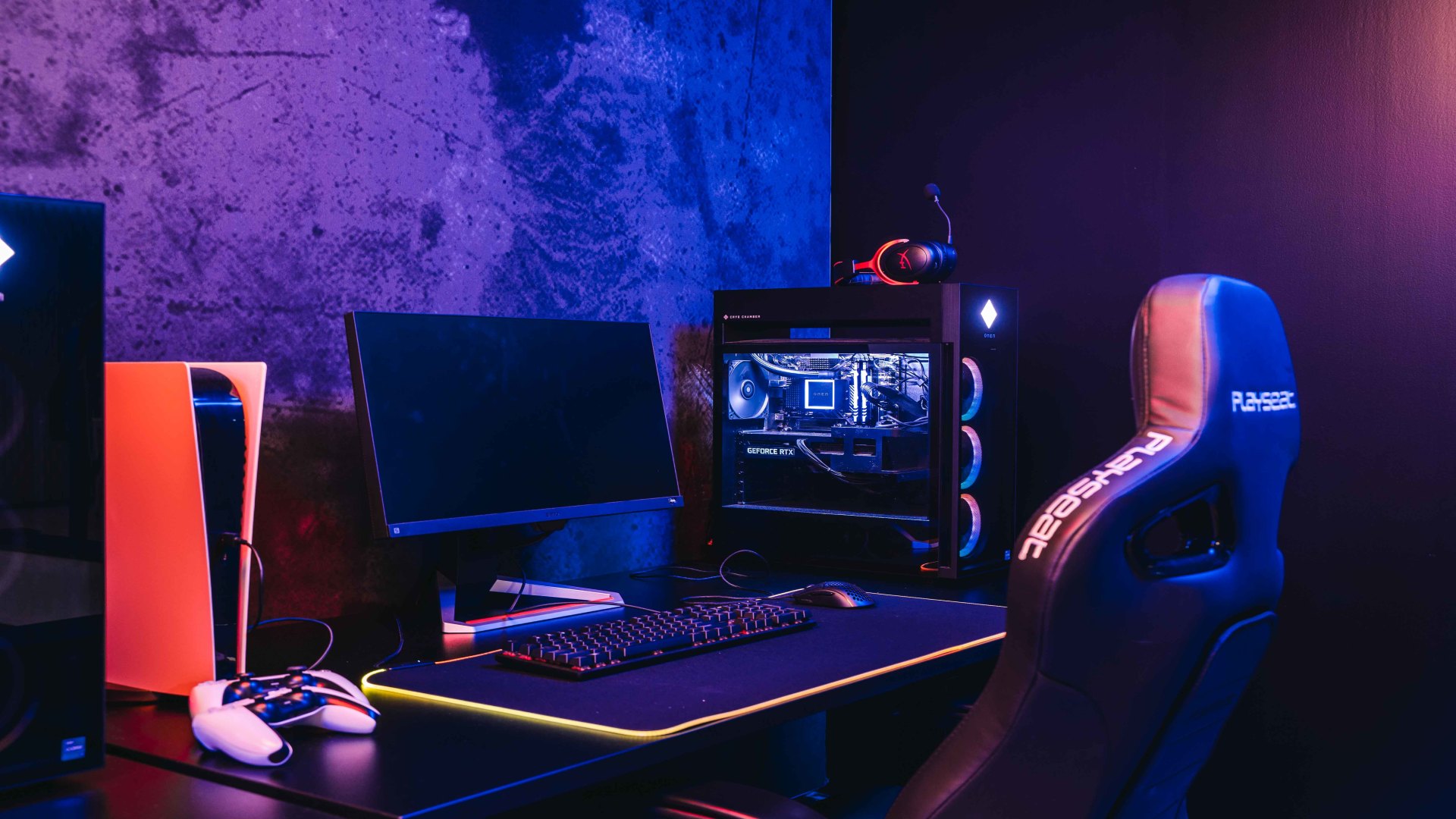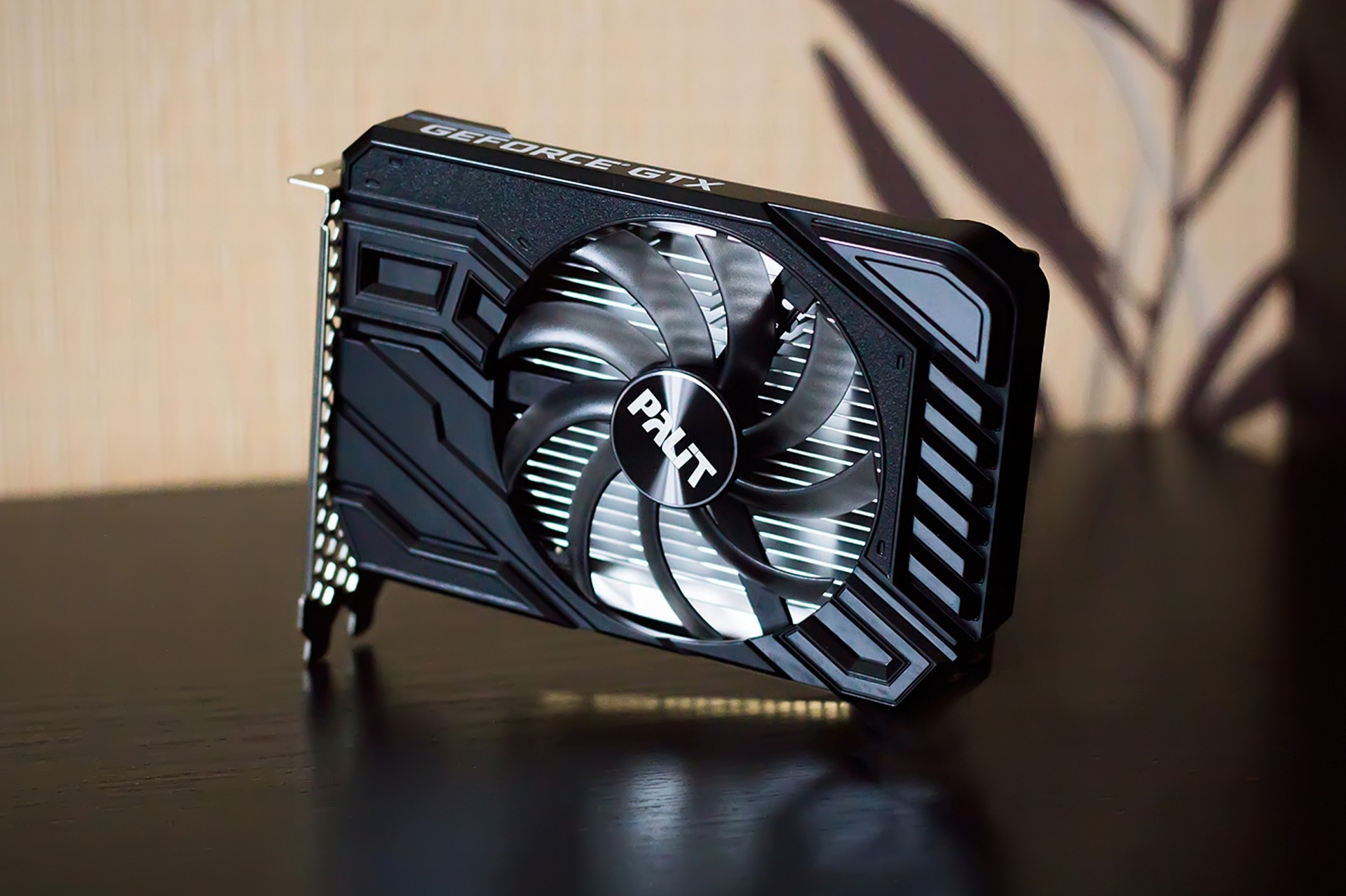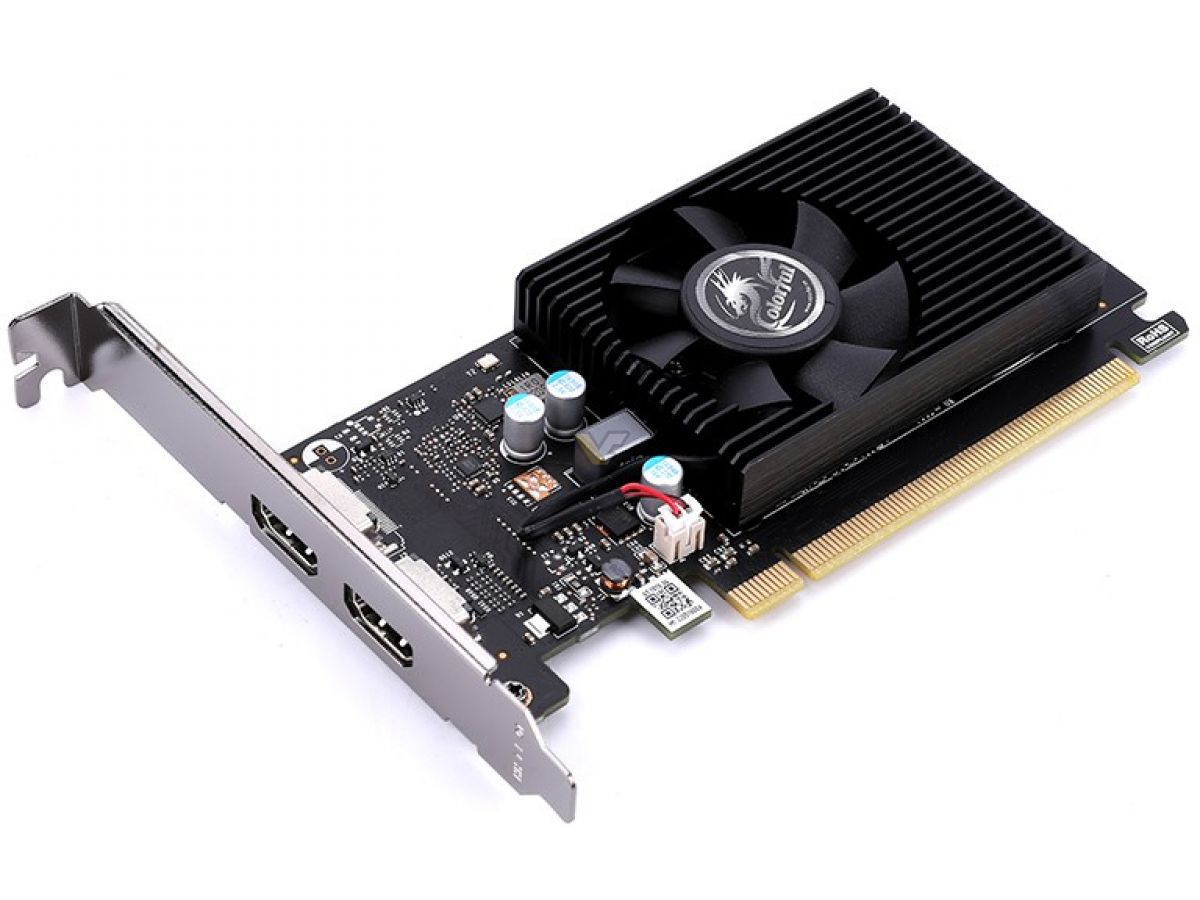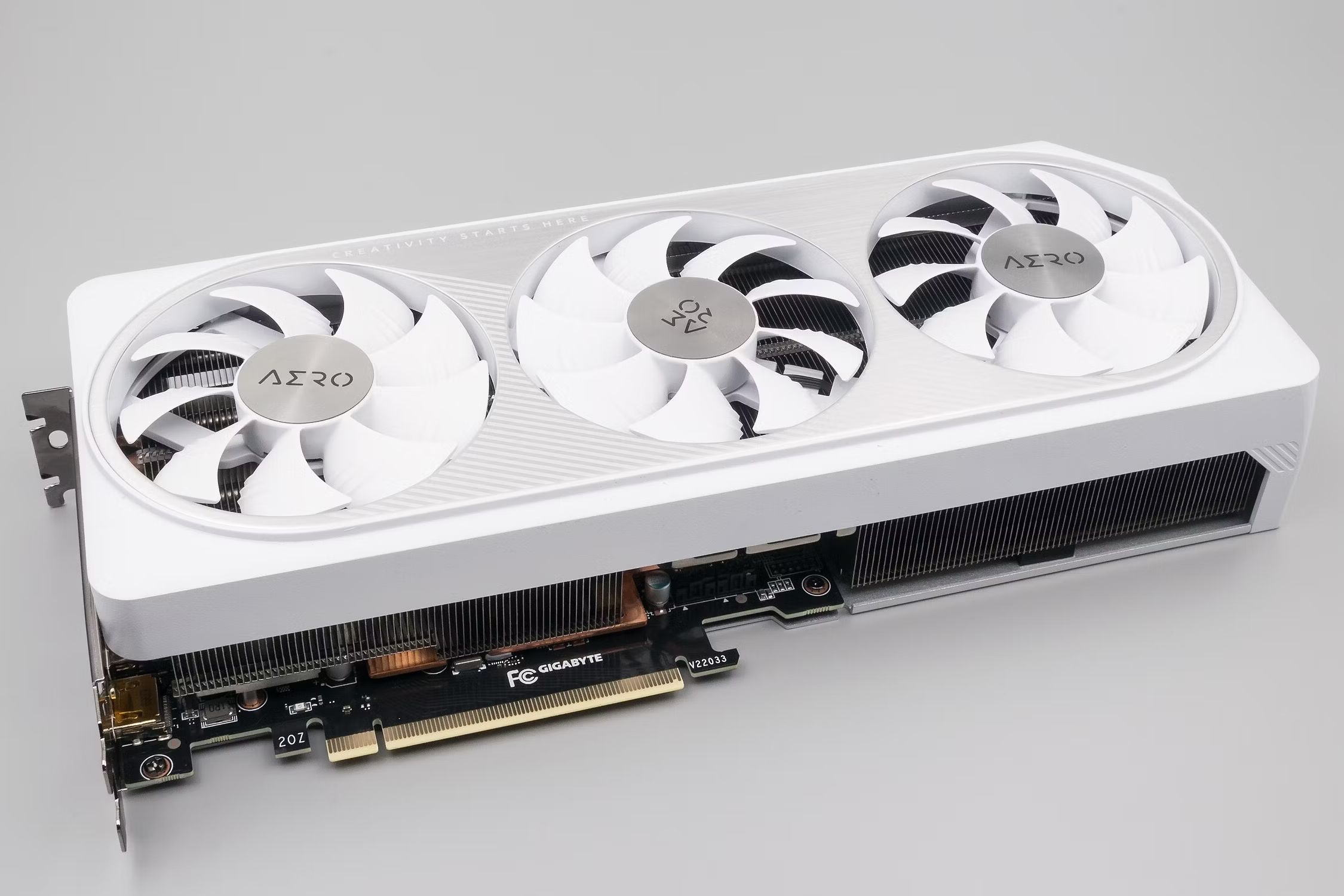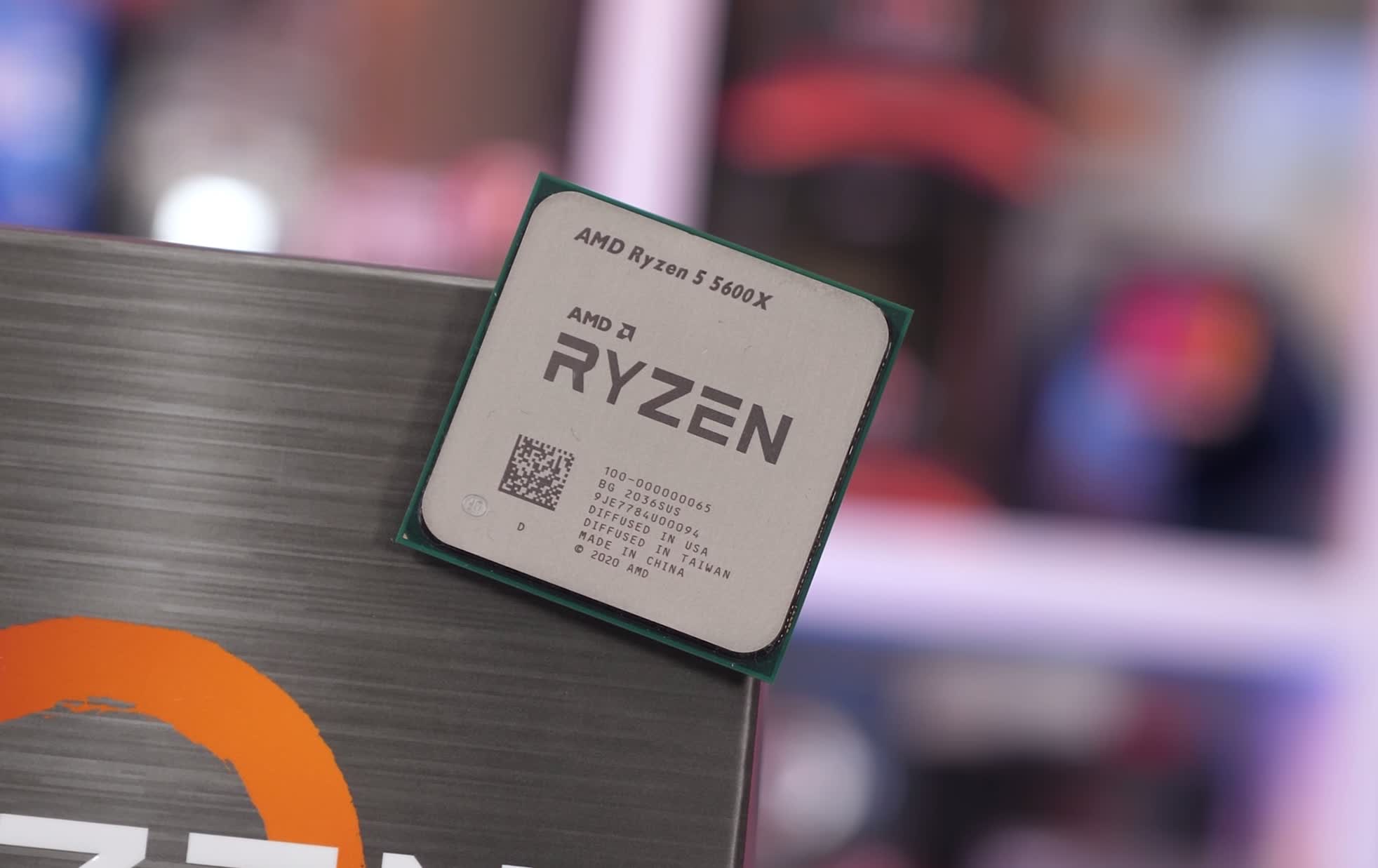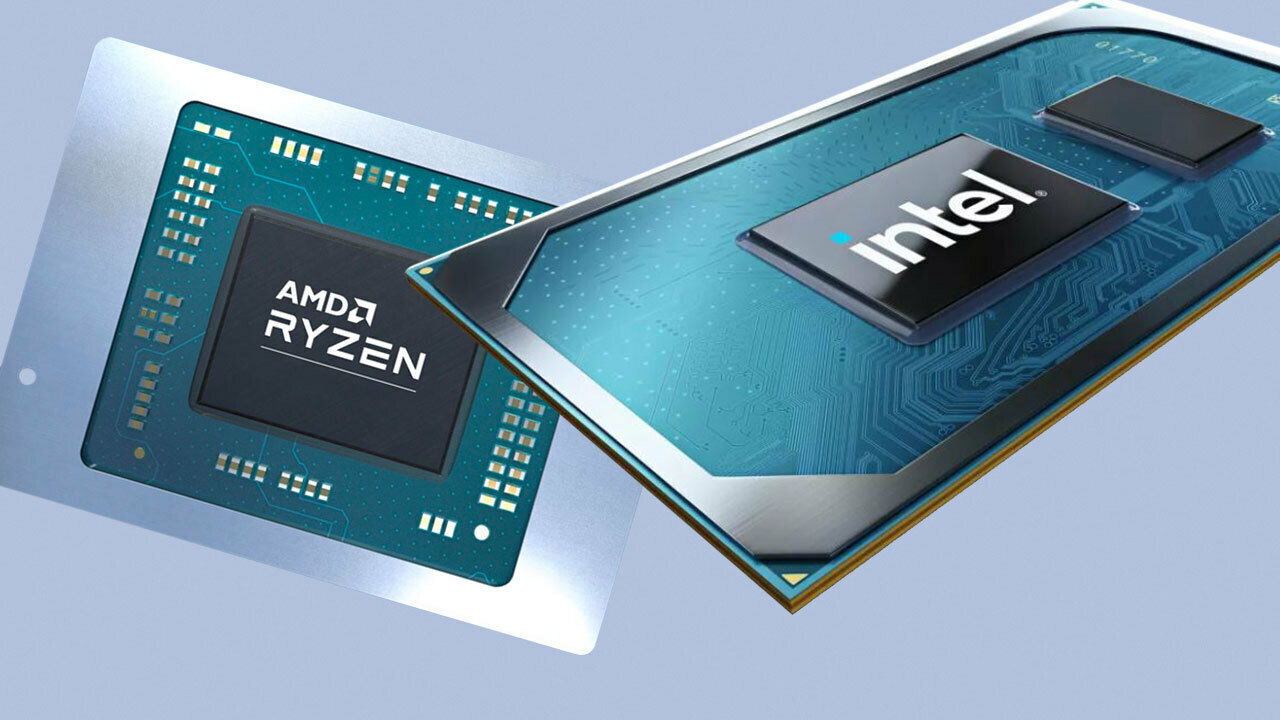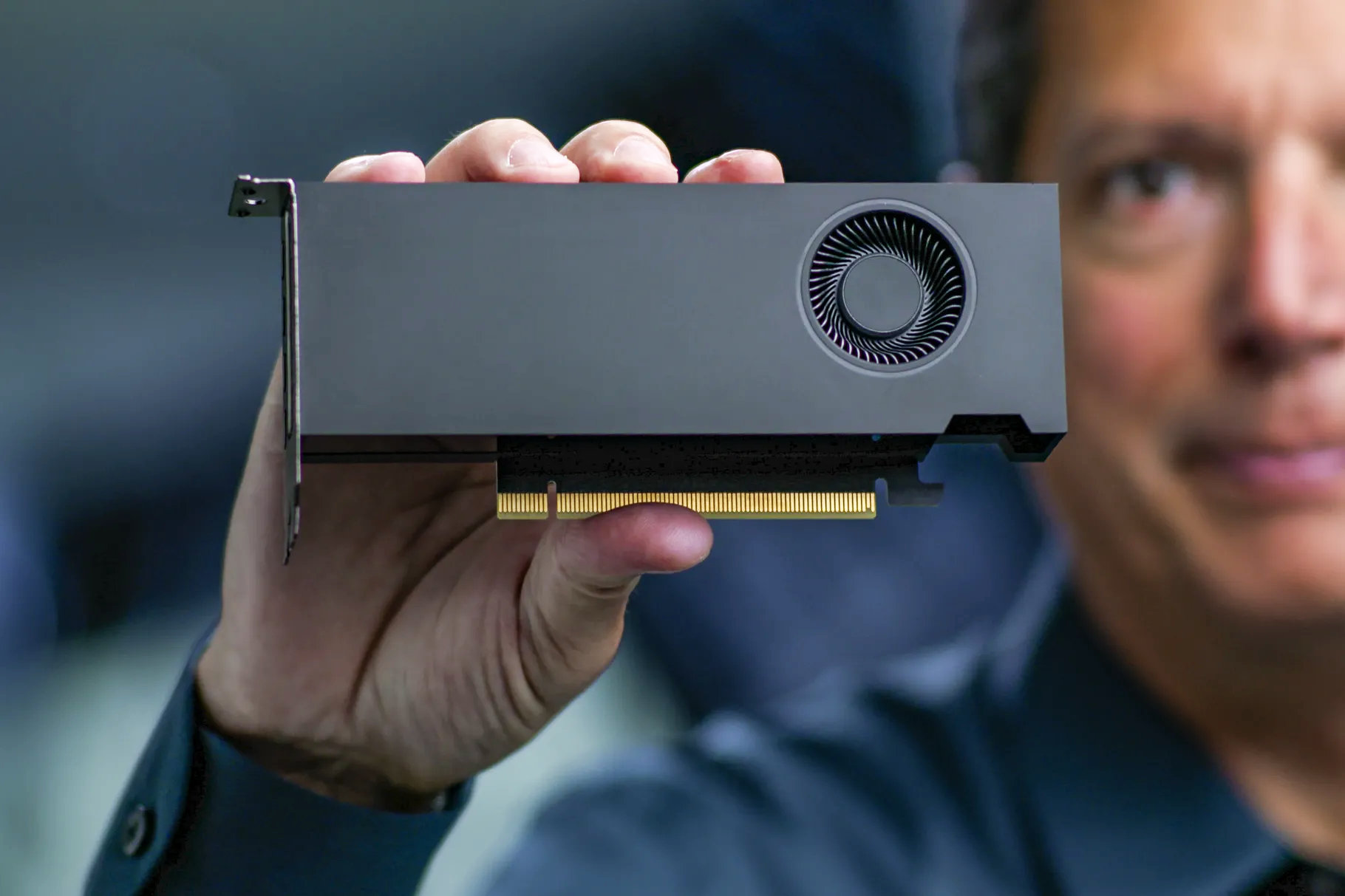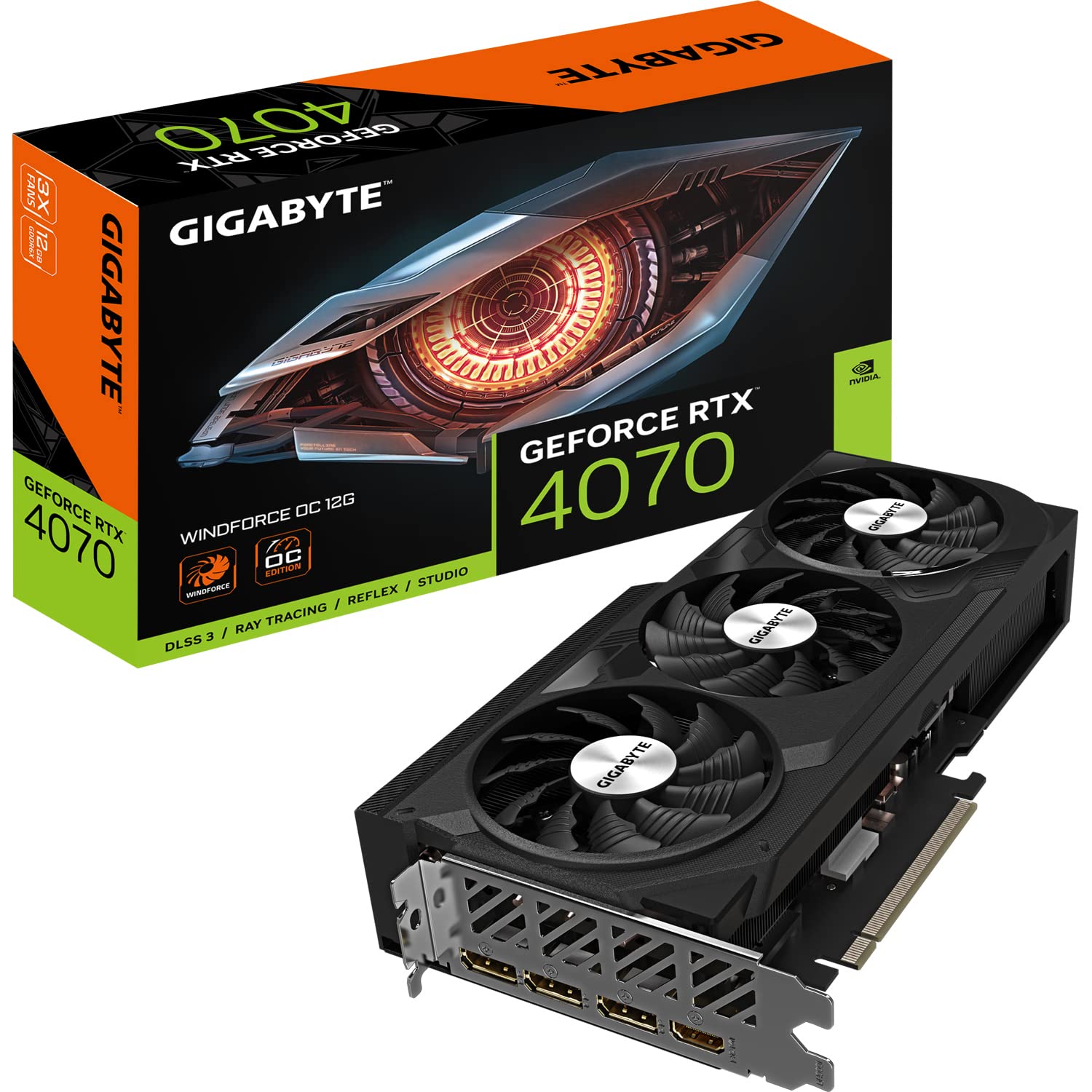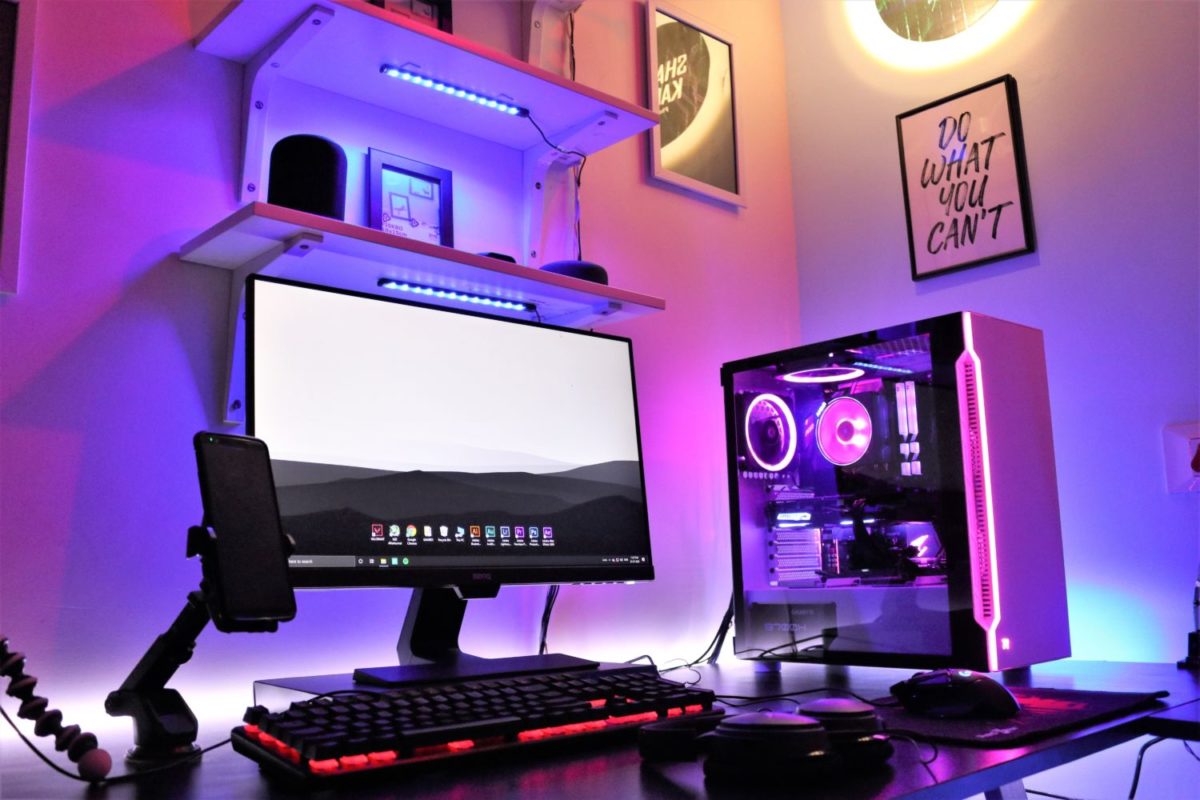Introduction
In the ever-evolving world of streaming, content creators are constantly seeking ways to enhance the quality of their broadcasts. A crucial component of a seamless streaming experience is the Graphics Processing Unit (GPU). The GPU plays a vital role in rendering graphics, handling video encoding, and optimizing performance when streaming to platforms like Twitch, YouTube, or Mixer.
Choosing the right GPU for streaming can be a daunting task, as there are a plethora of options available on the market. This article aims to simplify the process and provide you with a comprehensive guide on selecting the perfect GPU for your streaming needs.
Whether you’re a beginner streamer on a tight budget or a seasoned content creator looking to upgrade your setup, we’ll explore various GPU options that cater to different streaming scenarios. From budget-friendly options that offer decent performance to high-end GPUs that deliver exceptional quality, we’ve got you covered.
Before diving into specific GPU recommendations, it’s important to understand the factors you should consider when choosing a GPU for streaming. These factors will help you make an informed decision based on your requirements, budget, and desired streaming quality.
So, if you’re ready to take your streaming game to the next level, let’s dive into the world of GPUs and find the perfect fit for your streaming setup.
What is GPU and Why Does it Matter for Streaming
Before delving into the specifics of choosing a GPU for streaming, it’s important to understand what a GPU is and why it plays a crucial role in the streaming process.
A Graphics Processing Unit (GPU) is a specialized electronic circuit designed to rapidly manipulate and alter memory to accelerate the creation of images and videos. GPUs are primarily used for rendering graphics in video games, but they also play a significant role in streaming.
When it comes to streaming, the GPU handles tasks such as video encoding, compression, and decoding. It takes the burden off the CPU (Central Processing Unit), allowing for smoother performance and higher video quality. A powerful and capable GPU can handle complex video encoding algorithms, resulting in a higher frame rate, sharper image quality, and overall improved streaming experience.
The GPU is particularly important for live streaming, where real-time video encoding and rendering are essential. Streaming platforms require a specific format and bitrate for video uploads, and a robust GPU ensures that your stream is encoded efficiently without significant drops in performance.
Furthermore, a quality GPU can also enhance the livestream’s visual appeal by providing real-time game graphics rendering, ensuring that viewers enjoy a visually captivating experience. Whether you’re streaming fast-paced action games or visually stunning titles, a reliable GPU will help maintain a smooth and immersive gameplay experience, keeping your audience engaged and entertained.
Another aspect to consider is the compatibility of your GPU with streaming software. Certain streaming applications, like OBS (Open Broadcaster Software) or XSplit, offer hardware encoding using the GPU’s capabilities, resulting in lower CPU usage and better overall system performance. Therefore, choosing a GPU that is compatible with your preferred streaming software can greatly enhance your streaming setup.
In summary, the GPU plays a crucial role in streaming by handling video encoding, compression, and rendering. It offloads these tasks from the CPU, improving overall performance, video quality, and allowing for a more immersive streaming experience. Additionally, the GPU’s compatibility with streaming software can further optimize your setup and alleviate strain on your system.
Factors to Consider When Choosing a GPU for Streaming
When it comes to choosing the right GPU for streaming, there are several important factors to consider. Taking these factors into account will help you make an informed decision that aligns with your streaming requirements, budget, and desired streaming quality. Let’s explore the key factors to consider when selecting a GPU for streaming.
- Streaming Software Compatibility: One of the first factors to consider is the compatibility of the GPU with your chosen streaming software. Some streaming applications offer hardware encoding, which utilizes the GPU’s capabilities. Check if your preferred software supports GPU encoding, as it can significantly reduce CPU usage and improve overall system performance.
- Video Quality and Resolution: The video quality and resolution you aim to achieve during streaming are vital considerations. Higher resolutions and frame rates require more processing power. Look for a GPU that can handle the video quality and resolution you desire without compromising performance.
- Video Encoding: Video encoding is a critical aspect of streaming. The GPU’s encoding capabilities determine the efficiency and quality of the video stream. Look for a GPU that supports modern encoding standards like H.264 and H.265 (HEVC), as they offer better compression and streaming efficiency.
- Memory: GPU memory, also known as VRAM, plays a crucial role in streaming. Higher VRAM capacity allows for smoother and more efficient rendering of game graphics and streaming overlays. Consider your streaming requirements and the games you plan to stream when deciding on the VRAM capacity you need.
- Performance: The performance of the GPU is a significant factor when it comes to streaming. Look for GPUs with higher core counts, clock speeds, and CUDA or stream processor counts. These factors contribute to smoother gameplay and better video encoding capabilities.
- Power Consumption: Power consumption is an important consideration, especially if you have a limited power supply or if you’re conscious of energy consumption. Look for GPUs that offer efficient power consumption to avoid straining your system and incurring high electricity costs.
- Budget: Last but not least, consider your budget when choosing a GPU for streaming. There are options available for various price ranges, so prioritize the factors that are most important to you and find a balance between performance and affordability.
By considering these factors, you can make an informed decision and select a GPU that meets your streaming needs, ensuring a smooth and high-quality streaming experience for both you and your viewers. Keep these factors in mind as we move on to explore the different GPU options suitable for streaming in the following sections.
Budget-Friendly GPUs for Streaming
If you’re a beginner streamer or on a tight budget, there are still GPU options available that can provide satisfactory streaming performance without breaking the bank. These budget-friendly GPUs offer decent encoding capabilities and can handle streaming at lower resolutions and frame rates. Let’s take a look at some of the budget-friendly GPUs that are suitable for streaming.
- NVIDIA GTX 1660 Super: The GTX 1660 Super is a solid budget-friendly option for streaming. It offers good performance for its price range and can handle streaming at 1080p resolution. With its efficient Turing architecture, it delivers smooth gameplay and reliable video encoding quality.
- AMD Radeon RX 580: The Radeon RX 580 from AMD is another affordable GPU option. It provides good value for the price and offers decent streaming performance. While it may not be as powerful as higher-end GPUs, it can handle streaming at 1080p resolution with relative ease.
- NVIDIA GTX 1650 Super: The GTX 1650 Super is a budget-friendly option that offers good streaming performance for its price. It is capable of handling streaming at 1080p resolution and provides a smooth and reliable streaming experience.
- AMD Radeon RX 5600 XT: The Radeon RX 5600 XT is a slightly higher-end option within the budget-friendly range. It offers excellent performance for its price point and can handle streaming at higher resolutions and frame rates. It provides a good balance between price and performance for budget-conscious streamers.
These budget-friendly GPUs provide a cost-effective solution for streamers who are just starting out or have budget constraints. While they may not offer the same level of performance as higher-end options, they are still capable of delivering satisfactory streaming quality for most streaming scenarios. Consider your budget and streaming requirements when choosing a budget-friendly GPU, and find the one that best suits your needs.
Mid-Range GPUs for Streaming
If you have a bit more budget to spare and want to upgrade to a more powerful GPU for streaming, mid-range options offer a great balance between price and performance. These GPUs provide enhanced video quality, improved encoding capabilities, and can handle streaming at higher resolutions and frame rates. Let’s explore some of the mid-range GPUs that are suitable for streaming.
- NVIDIA RTX 2060 Super: The RTX 2060 Super is a popular choice for mid-range streaming setups. It offers excellent performance and can handle streaming at 1440p resolution without compromising on video quality. With its Turing architecture, it provides improved encoding capabilities and real-time ray tracing for enhanced visual effects.
- AMD Radeon RX 5700 XT: The Radeon RX 5700 XT is a powerful mid-range GPU that delivers exceptional streaming performance. It offers smooth gameplay at 1440p resolution and provides excellent video encoding capabilities. With its RDNA architecture, it provides great value for its price range.
- NVIDIA RTX 2070 Super: The RTX 2070 Super is a high-performing mid-range GPU that offers impressive streaming capabilities. It can handle streaming at 1440p resolution with ease and offers advanced features like real-time ray tracing and DLSS (Deep Learning Super Sampling) for improved graphics and performance.
- AMD Radeon RX 5600 XT: The Radeon RX 5600 XT, although mentioned earlier in the budget-friendly section, also falls within the mid-range category. With its excellent price-to-performance ratio, it can handle streaming at 1080p resolution with ease and provides reliable video encoding capabilities.
These mid-range GPUs offer a significant performance upgrade over budget-friendly options, providing smoother gameplay, better video quality, and enhanced encoding capabilities. They are well-suited for streamers who prioritize streaming at higher resolutions and want to deliver an immersive streaming experience to their viewers. Consider your budget and streaming requirements when choosing a mid-range GPU, and select the one that best fits your needs.
High-End GPUs for Streaming
For streamers who demand top-tier performance and want to achieve the highest quality streaming experience, high-end GPUs are the way to go. These GPUs offer unparalleled power, exceptional video encoding capabilities, and can handle streaming at ultra-high resolutions and frame rates. Let’s explore some of the high-end GPUs that are suitable for streaming.
- NVIDIA RTX 2080 Ti: The RTX 2080 Ti is currently one of the most powerful GPUs on the market. It delivers outstanding gaming performance and can handle streaming at 4K resolution without compromising on video quality. With its advanced Turing architecture and dedicated hardware encoder, it provides excellent video encoding capabilities for top-quality streams.
- AMD Radeon RX 6900 XT: The Radeon RX 6900 XT is AMD’s flagship GPU that offers exceptional performance for high-end streaming setups. It can handle streaming at 4K resolution with ease, providing smooth gameplay and incredible video quality. With its RDNA 2 architecture and hardware-accelerated ray tracing, it sets a new standard for visual fidelity.
- NVIDIA RTX 3070: The RTX 3070 is a high-end GPU that offers excellent performance and is well-suited for streaming at 1440p or 4K resolution. It provides impressive video encoding capabilities and features like DLSS for improved graphics and performance.
- AMD Radeon RX 6800 XT: The Radeon RX 6800 XT is a powerful high-end GPU that delivers exceptional streaming performance. It offers smooth gameplay at 4K resolution and provides excellent video encoding capabilities for high-quality streams. With its RDNA 2 architecture, it brings stunning visuals to life.
These high-end GPUs are designed to meet the demands of streamers who want to push the boundaries of streaming quality and performance. They offer unmatched power, incredible video encoding capabilities, and ensure a seamless streaming experience even at the highest resolutions. While they come at a higher price point, they provide the ultimate streaming performance for those who prioritize top-quality streams.
GPU Recommendations for Different Streaming Scenarios
Choosing the right GPU for streaming depends on various factors, including your streaming requirements, budget, and the level of performance you desire. Let’s explore some GPU recommendations for different streaming scenarios to help you make an informed decision based on your specific needs.
1. Casual Streaming: If you’re a casual streamer who primarily broadcasts less demanding games or prefers streaming at lower resolutions, a budget-friendly GPU like the NVIDIA GTX 1660 Super or the AMD Radeon RX 580 can offer satisfactory performance without breaking the bank.
2. Mid-Range Streaming: For streamers aiming for a balance between affordability and performance, mid-range GPUs like the NVIDIA RTX 2060 Super or the AMD Radeon RX 5700 XT are excellent choices. These GPUs can handle streaming at higher resolutions and offer improved video encoding capabilities.
3. High-Quality Streaming: If you prioritize delivering top-quality streams with smooth gameplay at higher resolutions, high-end GPUs like the NVIDIA RTX 2080 Ti or the AMD Radeon RX 6900 XT are recommended. These GPUs provide exceptional performance, robust video encoding capabilities, and can handle streaming at 4K resolutions without compromise.
4. Competitive Streaming: For competitive gamers who require the best possible performance and minimal latency during streaming, high-end GPUs like the NVIDIA RTX 3070 or the AMD Radeon RX 6800 XT offer the power needed for high frame rates and smooth gameplay. These GPUs excel in fast-paced games and provide excellent video encoding capabilities.
It’s important to assess your specific streaming needs and take into account factors like budget, desired video quality, and target resolutions when selecting a GPU. Additionally, consider the compatibility of the GPU with your chosen streaming software and any additional features, such as real-time ray tracing or DLSS, that may enhance the streaming and gaming experience.
By choosing a GPU that suits your streaming scenario, you can ensure a seamless and high-quality streaming experience for both you and your viewers.
Conclusion
Selecting the right GPU for streaming is a critical decision that can greatly impact the quality and performance of your streams. By considering factors such as streaming software compatibility, video quality, encoding capabilities, memory, performance, power consumption, and budget, you can make an informed choice that aligns with your streaming needs.
For those on a budget, there are budget-friendly GPU options like the NVIDIA GTX 1660 Super and the AMD Radeon RX 580 that still offer decent streaming performance. If you’re looking for a balance between price and performance, mid-range GPUs like the NVIDIA RTX 2060 Super and the AMD Radeon RX 5700 XT provide a great solution.
For streamers who demand top-tier performance and exceptional video quality, high-end GPUs like the NVIDIA RTX 2080 Ti or the AMD Radeon RX 6900 XT deliver unparalleled power and encoding capabilities, making them ideal for streaming at higher resolutions and frame rates.
Different streaming scenarios call for different GPU recommendations. Casual streamers, mid-range streamers, competitive gamers, and those focused on high-quality streaming all have specific GPU options that cater to their respective needs.
Remember to consider the compatibility of your chosen GPU with streaming software and any additional features that may enhance your streaming experience, such as real-time ray tracing or DLSS. By selecting a GPU that suits your streaming scenario and meets your preferences and budget, you can ensure a smooth, immersive, and top-quality streaming experience for both you and your viewers.
Take the time to research and consider your options, keeping in mind the factors discussed in this article. Whether you’re just starting out or looking to upgrade your streaming setup, the right GPU can elevate your streaming game to new heights.







